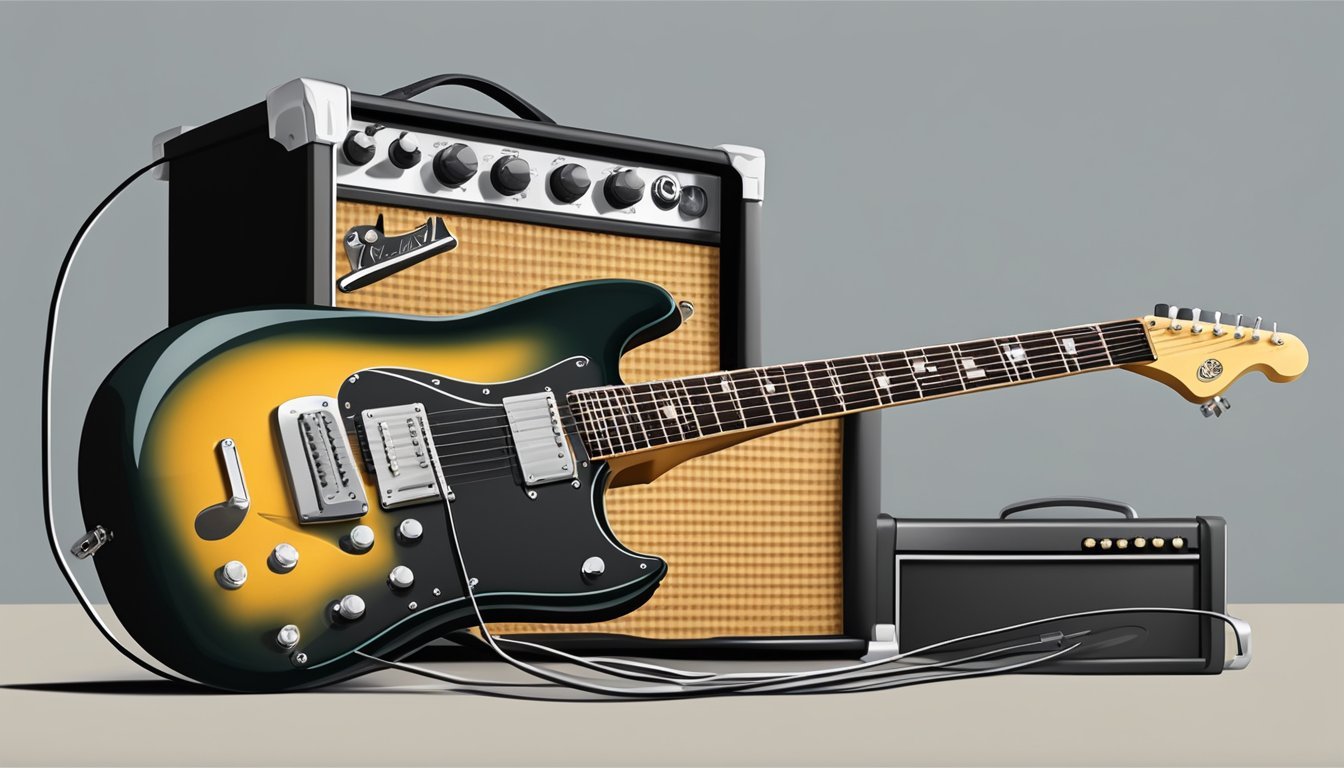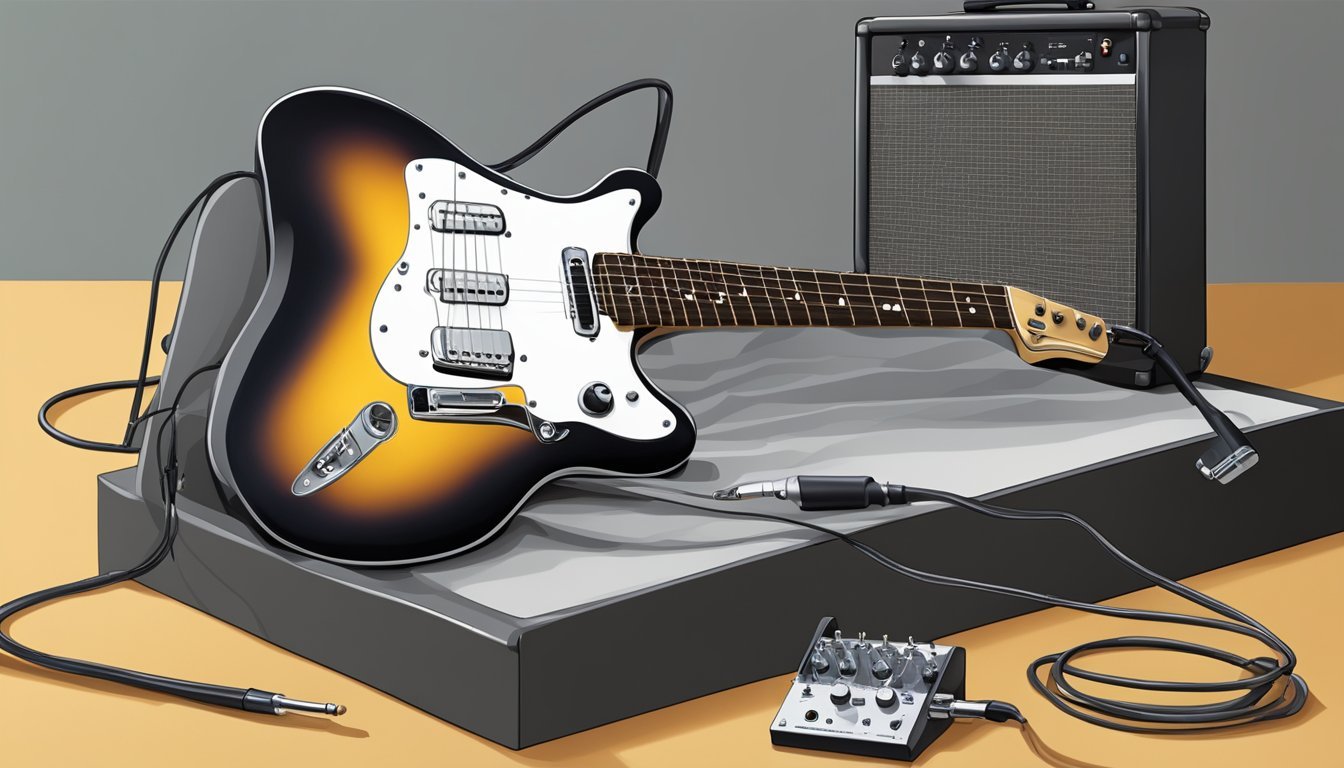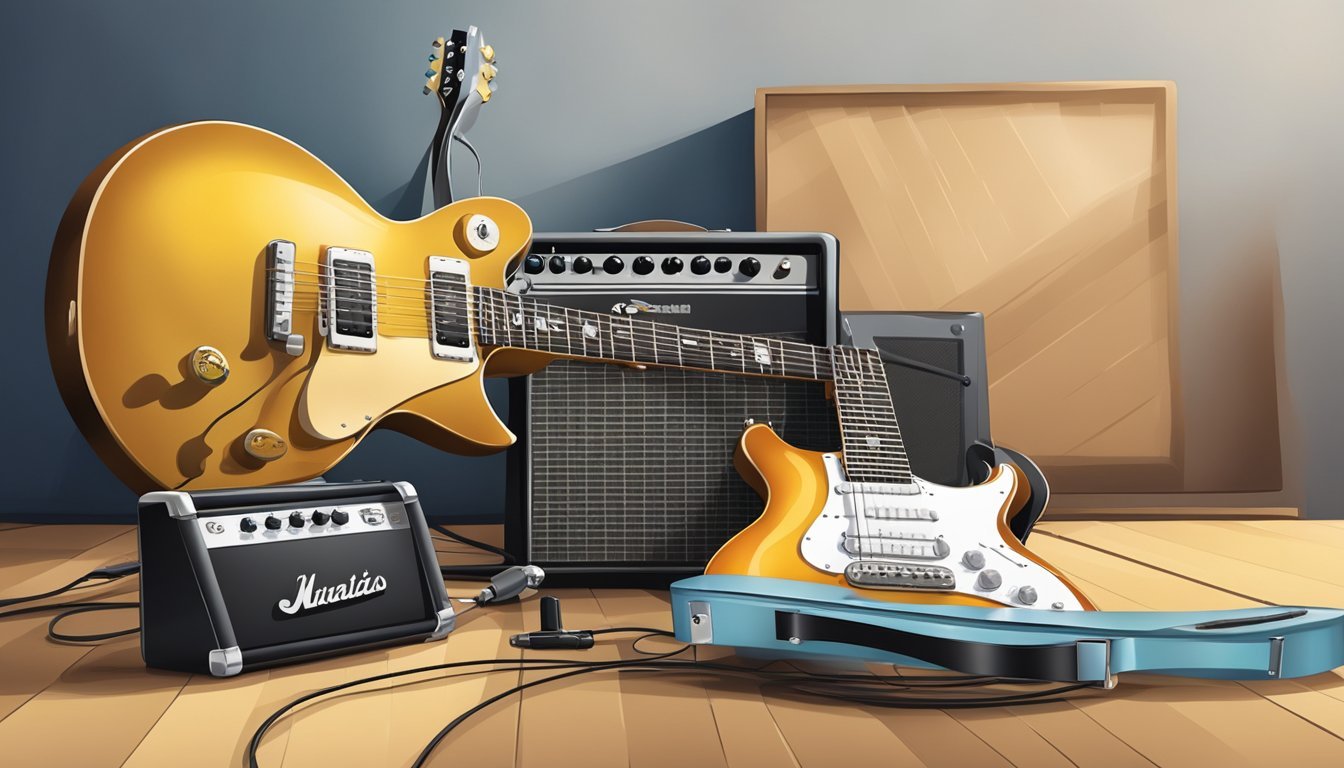Getting started with the electric guitar can seem overwhelming, but it doesn’t have to be.
To play electric guitar, you need a few essential items like the guitar itself, an amplifier, and a cable to connect them.
With the right equipment in hand, you can jump into your musical journey with excitement and confidence.

You can express your unique playing style by choosing various effects and techniques.
Understanding the basics will help you create the sound you want.
Plus, taking care of your guitar is key to ensuring it stays in great shape for years to come.
Key Takeaways
- You need an electric guitar, an amp, and a cable to get started.
- Exploring sound effects can enhance your playing experience.
- Regular maintenance keeps your guitar performing well.
Essential Equipment
To get started with playing electric guitar, you’ll need some key gear that makes it easier to practice and perform.
This section covers the most important items, from choosing your guitar to essential accessories that keep you playing smoothly.
Choosing Your Electric Guitar
When picking your electric guitar, consider the style and feel you want.
Popular models like the Fender Stratocaster and Gibson Les Paul each offer unique sounds.
If you prefer a bright tone, the Stratocaster might be your best choice.
On the other hand, the Les Paul delivers a warmer, thicker sound.
For beginners, Squier and Epiphone are solid options since they offer quality at a lower price.
Brands like Yamaha also provide good starter guitars.
Try different models in a store if you can.
It’s all about finding what feels right for you.
Amplifiers and Their Role
An amplifier is essential for electric guitars as it boosts the sound.
You’ll find many types, but a practice amp is a good start.
These smaller amps are perfect for home use and are more affordable.
Look for a model with basic controls for tone adjustments.
Amplifiers come with various features.
Some include built-in effects, while others focus purely on sound quality.
When searching for amps, consider your playing style and budget.
Whether you choose a solid-state or tube amp, make sure it fits your needs and enhances your sound.
Guitar Accessories for Beginners
Accessories play a big role in your guitar experience.
Here’s a list of must-have items for beginners:
- Guitar Strings: Always have spare strings handy for quick changes.
- Picks and Plectrums: These come in different thicknesses, so try a few to see what suits you best.
- Guitar Tuner: A clip-on tuner makes tuning quick and easy.
- Guitar Strap: This allows you to play standing up comfortably.
- Cables: Get a quality cable to connect your guitar to the amp without sound issues.
- Guitar Case or Stand: Protect your guitar with a case when not in use.
Collecting these basics will set you up for successful and enjoyable playing.
Technique Fundamentals

When learning to play electric guitar, getting the right techniques down is key.
This involves mastering basic chords and developing your strumming and picking skills.
Let’s break down these essential techniques.
Mastering Basic Chords
To start, you should focus on beginner chords.
These are often called open chords and they’re the foundation for many songs.
Basic chords like G, C, D, and E are common.
Start by learning where to place your fingers on the fretboard. Use your fingertips to press down the strings firmly.
Proper finger placement helps with playability and sound quality.
Practice switching between these chords smoothly.
You can create a simple list to track your favorite chords and spend a few minutes each day practicing them.
As you get comfortable, try adding power chords.
These are great for rock music and sound powerful.
They usually involve just two or three strings, making them easier to learn.
Developing Strumming and Picking
Once you have your chords down, work on your strumming and picking techniques. Strumming patterns are important for creating rhythm in your playing.
Start with simple downstrokes and then add upstrokes for variety.
Practicing different rhythms helps you develop a feel for timing and dynamics.
Try playing along with your favorite songs to get a sense of how strumming patterns fit into the music.
For picking, be sure to use techniques like bending and vibrato.
Bending involves pushing the string up or down to change the pitch, while vibrato adds depth and expression to your notes.
As you practice these skills, your understanding of music theory will grow, helping you become a more confident player.
Sound and Effects
Getting the right sound is key to playing electric guitar.
This involves using pedals and dialing in your amp settings to create the tones you want.
Understanding Guitar Pedals
Guitar pedals are essential for shaping your sound.
They come in various types, with some of the most popular being distortion, overdrive, and reverb pedals.
-
Distortion Pedal: This pedal adds grit to your tone. It’s great for rock and metal. You can use it to make your sound heavier and more aggressive.
-
Reverb Pedal: A reverb pedal adds depth to your sound. It creates an echo effect that makes your notes feel bigger and more spacious.
Other effects like delay and modulation effects (like chorus or flanger) allow for even more creativity.
Experimenting with different pedals helps you find your unique sound.
Dialing in Your Amp Settings
Amp settings play a major role in your sound.
Start by understanding the basic controls on your amplifier.
-
Volume and Tone Controls: These let you adjust how loud your guitar is and shape the sound. Increasing the treble can brighten your tone, while boosting bass adds warmth.
-
Pickup Selector: This switch lets you choose which pickups to use. Different pickups create varying tones, from bright and clean to thick and warm.
Get familiar with the gain setting too.
Higher gain gives a more saturated sound, while lower gain helps achieve a cleaner tone.
Combining these adjustments with your pedals helps you create a full and rich sound.
Maintaining Your Guitar
Taking care of your electric guitar is essential for its performance and longevity.
Regular maintenance can prevent common issues and keep your instrument sounding great.
Here’s what you need to know about setup and troubleshooting.
Regular Setup and Care
Your electric guitar needs regular setup and care to stay in peak condition.
Start with tuning your guitar using a reliable tuner to ensure it sounds just right.
Check the bridge for proper height and adjust it if necessary.
Changes in temperature and humidity can affect your setup, so pay close attention to that.
Inspect your machine heads to ensure they’re functioning correctly.
If they’re loose, tighten them to keep your tuning stable.
Make sure to clean your guitar frequently to remove dust, sweat, and grime.
Use a soft cloth and fretboard oil to keep your fretboard smooth and your humbucker or single-coil pickups free of debris.
Always have a set of spare strings handy, along with a string winder for quick string changes.
If you use strap locks, check them regularly to ensure your guitar remains secure while playing.
Troubleshooting Common Issues
Sometimes you may encounter problems with your guitar.
If you notice unwanted buzzing sounds, check the bridge and frets.
A simple adjustment can usually solve this issue.
If your guitar isn’t amplifying properly, first check your guitar cable.
If it’s damaged, replace it with a new one, as faulty cables can cause sound issues.
For issues with your tube amps or solid-state amps, inspect the connections and settings to ensure everything is correctly configured.
Be sure to check that your instrument cable is plugged in securely.
If you’re still having problems, consider testing with another amp to rule out issues.
Keep a few basic guitar accessories like picks and a polished cloth in your gig bag.
This way, you’re always ready to maintain your gear on the go!
Frequently Asked Questions

There are a lot of questions that come up when you’re starting to play electric guitar.
Understanding the gear, accessories, and differences in practice can help you get started on the right foot.
One of the first decisions you’ll face is choosing the right instrument, leading many beginners to ponder which electric guitar is best for their style and budget.
It’s important to consider factors such as sound quality, playability, and the genres of music you want to explore.
Additionally, investing in a good amplifier and essential accessories, like picks and a tuner, can make a significant difference in your overall playing experience.
What’s the essential gear for a newbie electric guitar player?
As a newbie, you’ll need a few key items.
First, you need an electric guitar and an amplifier to hear the sound.
A guitar cable is essential to connect the two.
This basic setup will get you started on your journey.
Can you use an electric guitar without plugging it into an amp?
An electric guitar won’t make much sound on its own.
To hear it, you need to plug it into an amp.
Without an amp, the sound is very quiet, so you will want to have that ready when you play.
What accessories should I get when I’m starting out with an electric guitar?
You should consider getting a guitar tuner, a strap, and some picks.
A tuner helps keep your guitar in tune, while a strap allows you to play standing up.
Picks come in handy for strumming and picking notes.
Is an electric guitar suitable for a beginner?
Yes, electric guitars can be a good choice for beginners.
They are often easier to play due to their lighter strings and lower action.
Plus, you can create a wide range of sounds that make practice more fun.
What does a complete beginner electric guitar kit include?
A complete beginner kit typically includes an electric guitar, an amplifier, a guitar cable, and accessories like a tuner and picks.
Sometimes, you might also find a gig bag to help carry your gear.
Kits make starting out easier and more accessible.
What’s the difference between practicing on an acoustic and an electric guitar?
Practicing on an electric guitar often involves using an amplifier and effects pedals.
This setup allows for more sound variety.
Acoustic guitars, on the other hand, rely solely on their body to produce sound, which can lead to a different playing experience.

